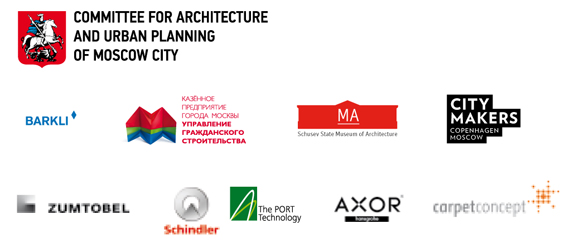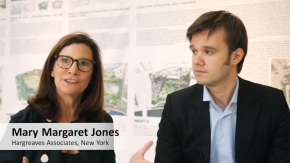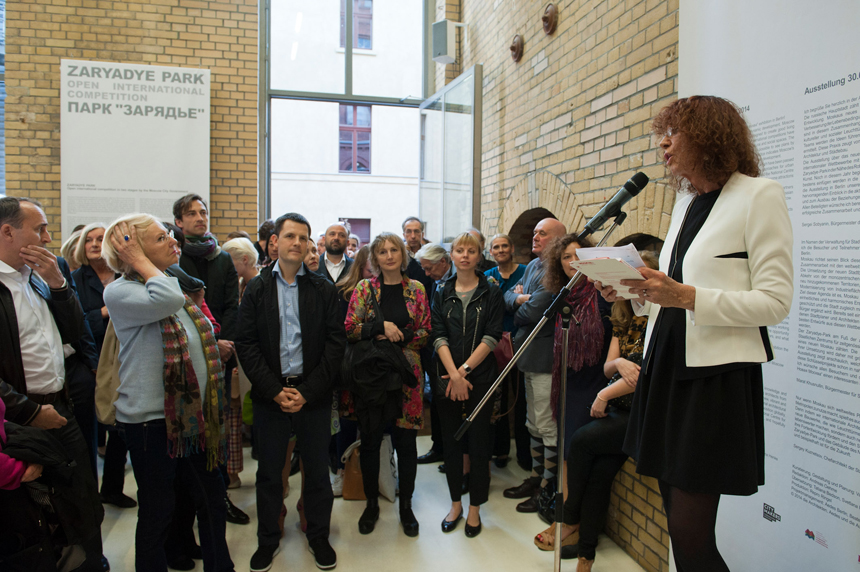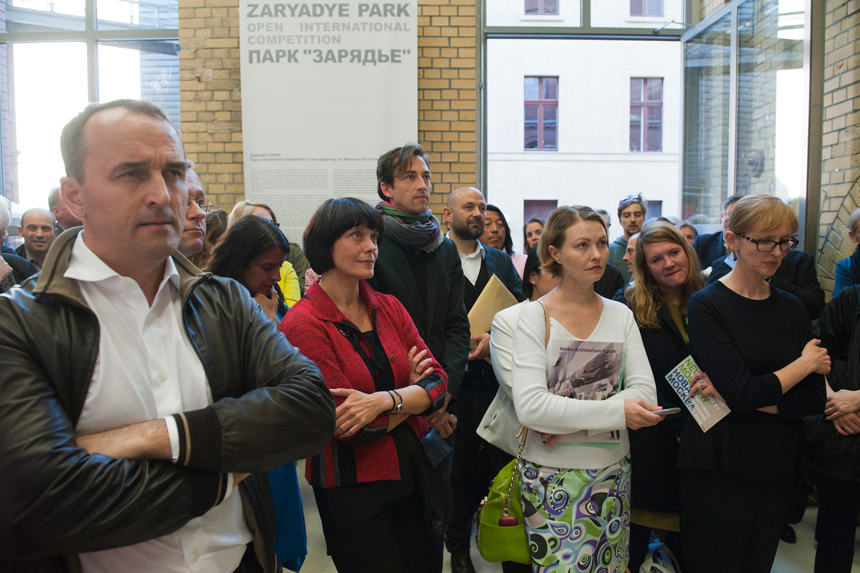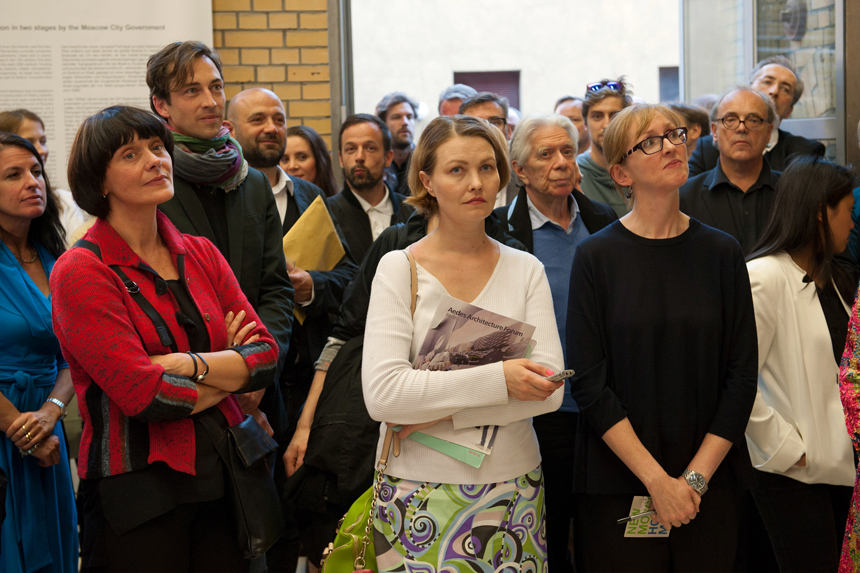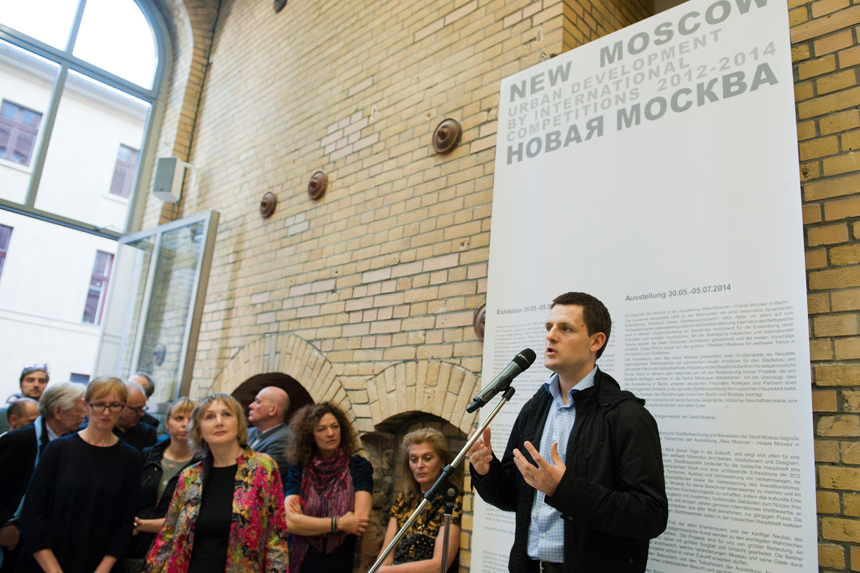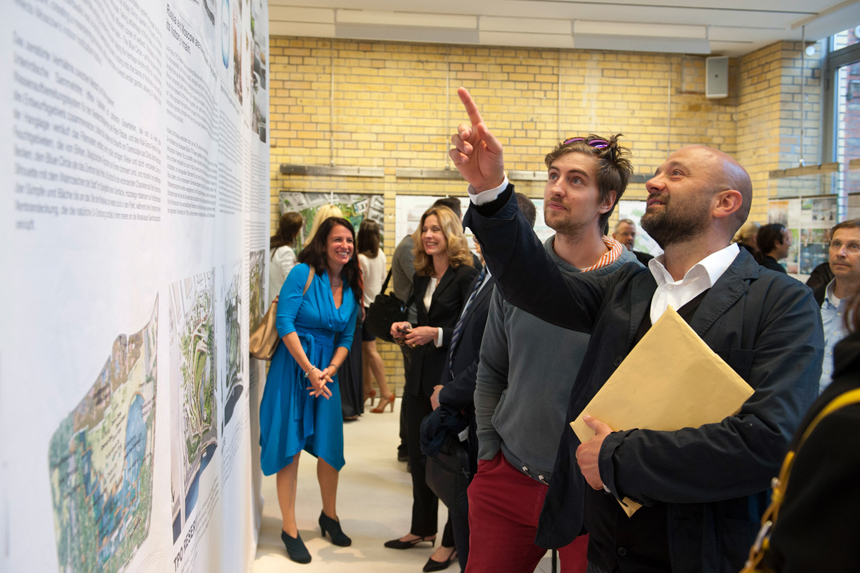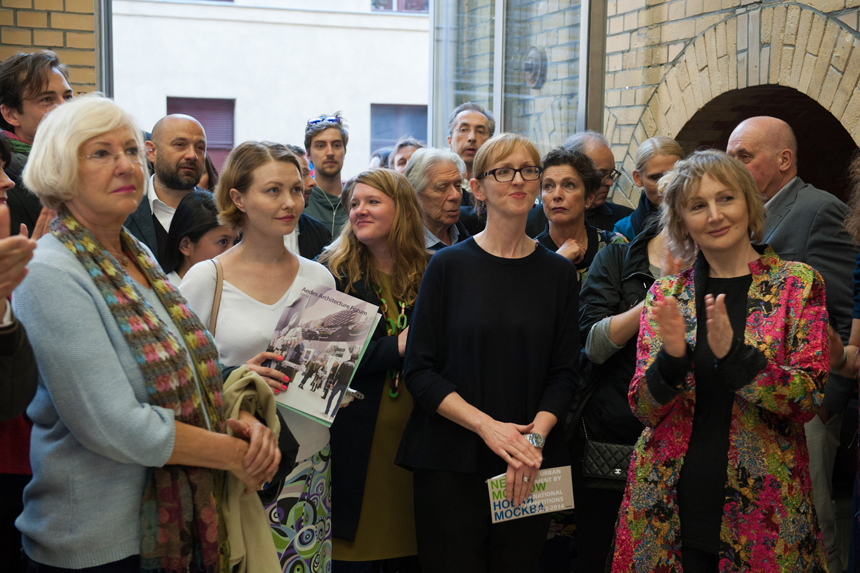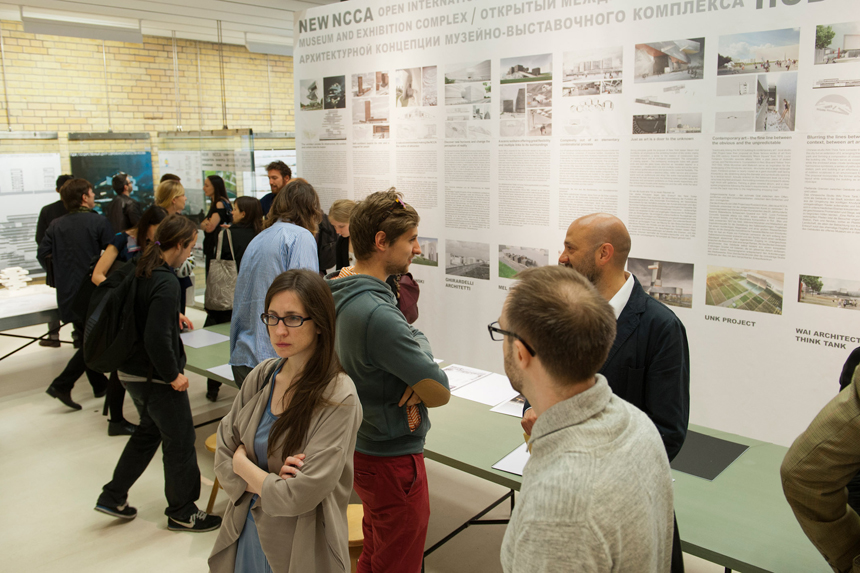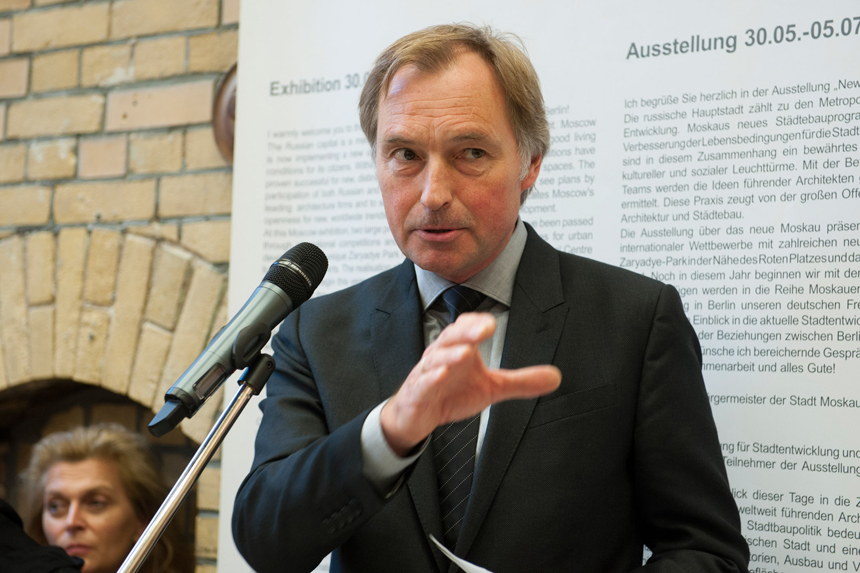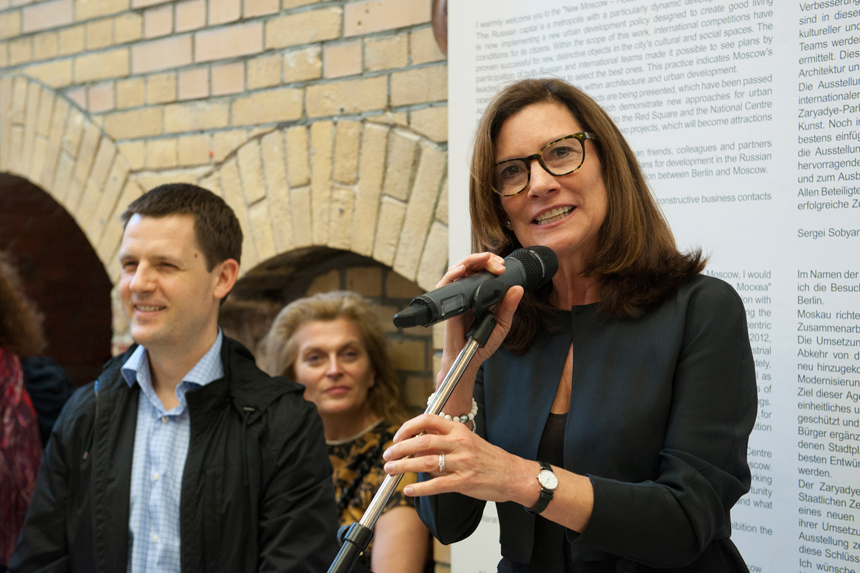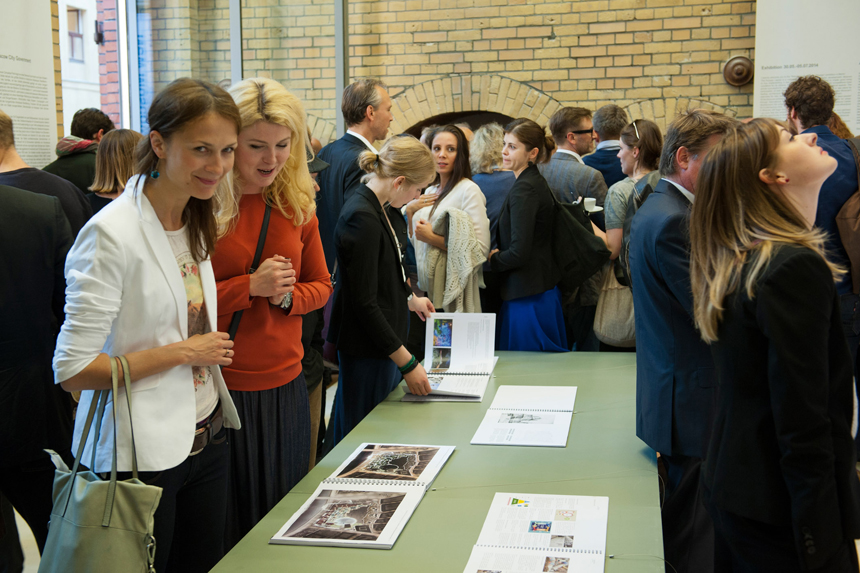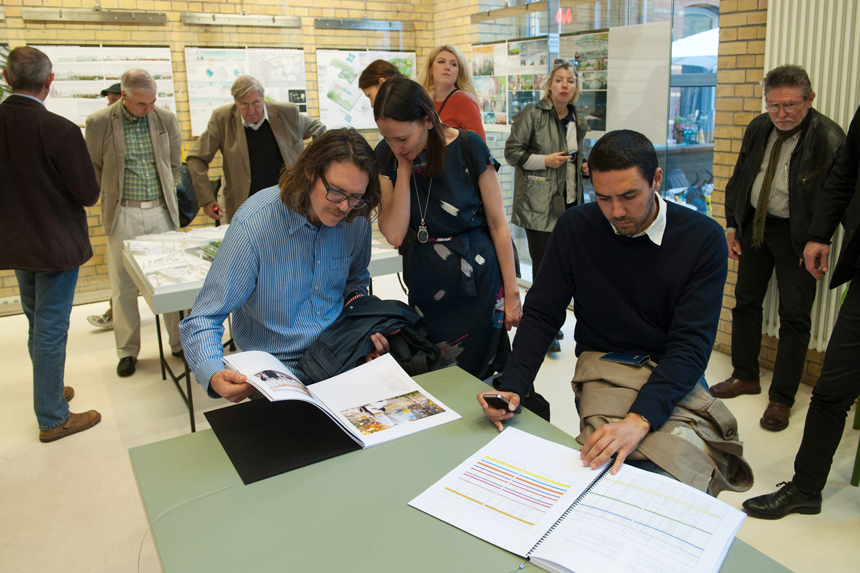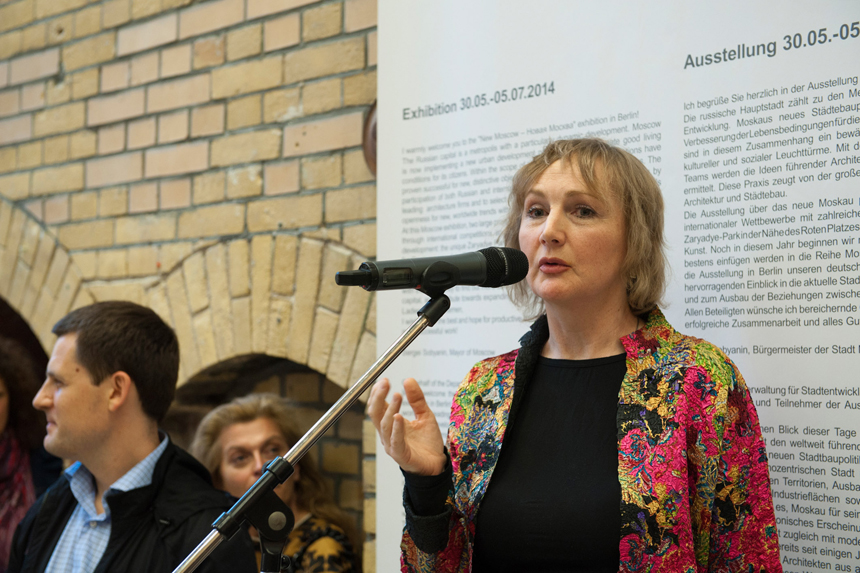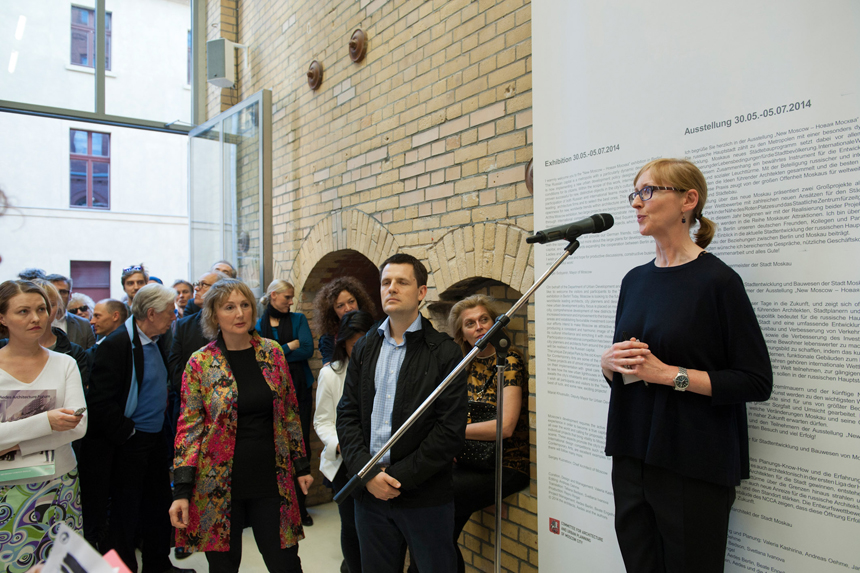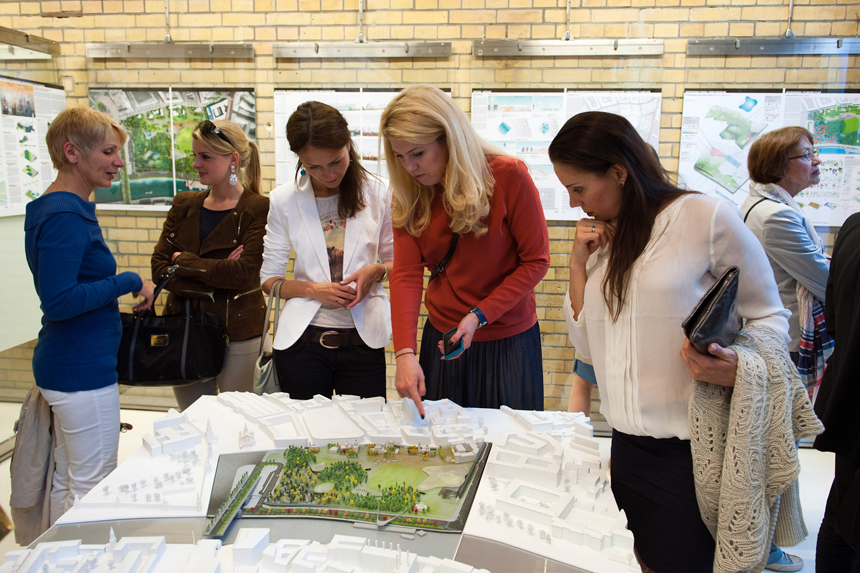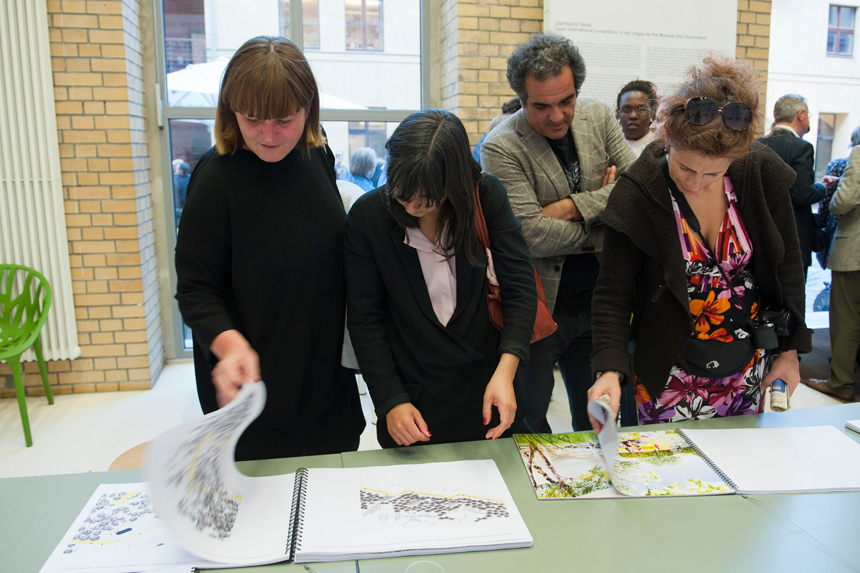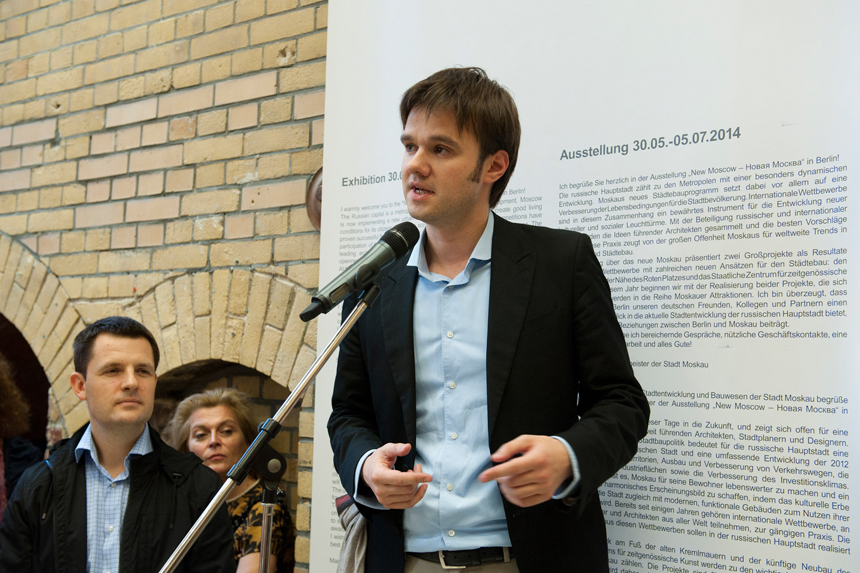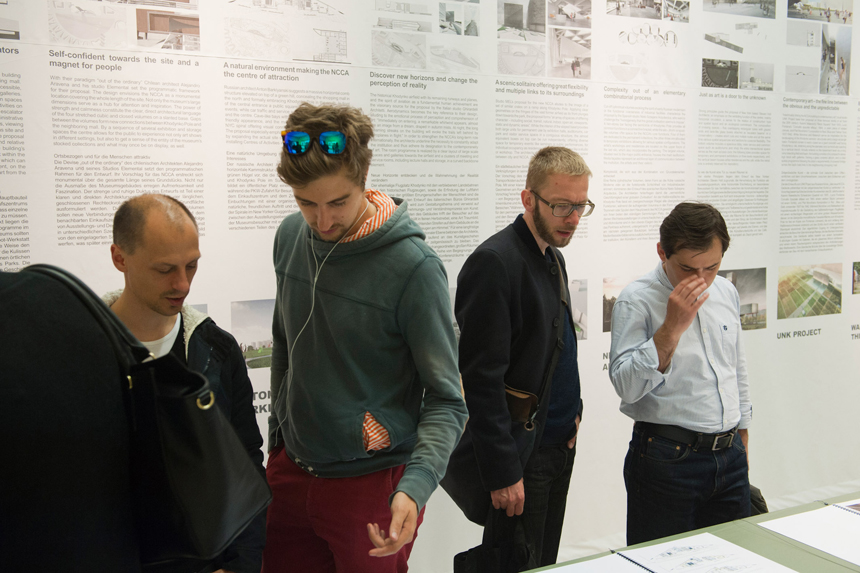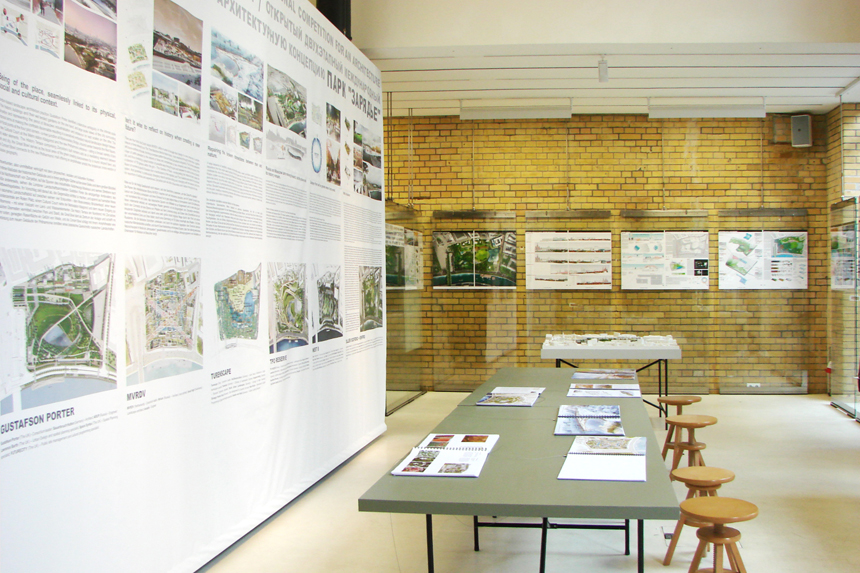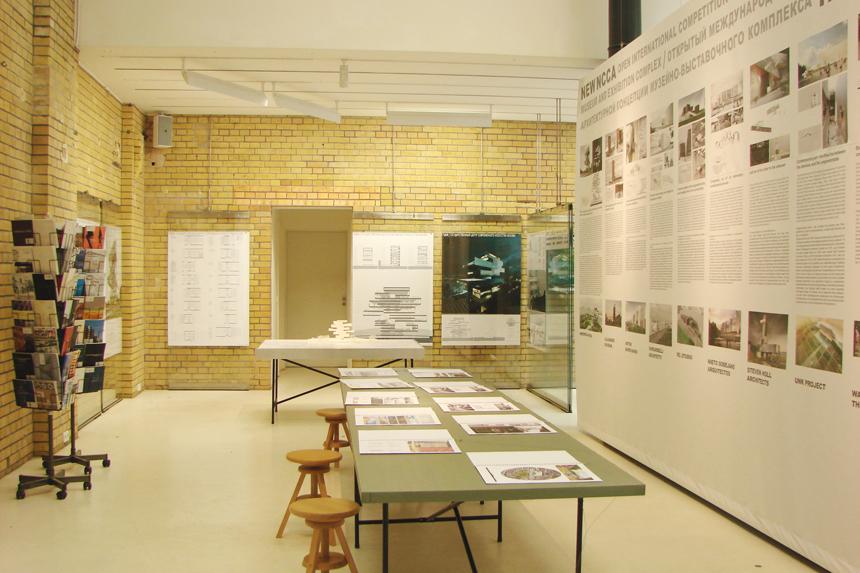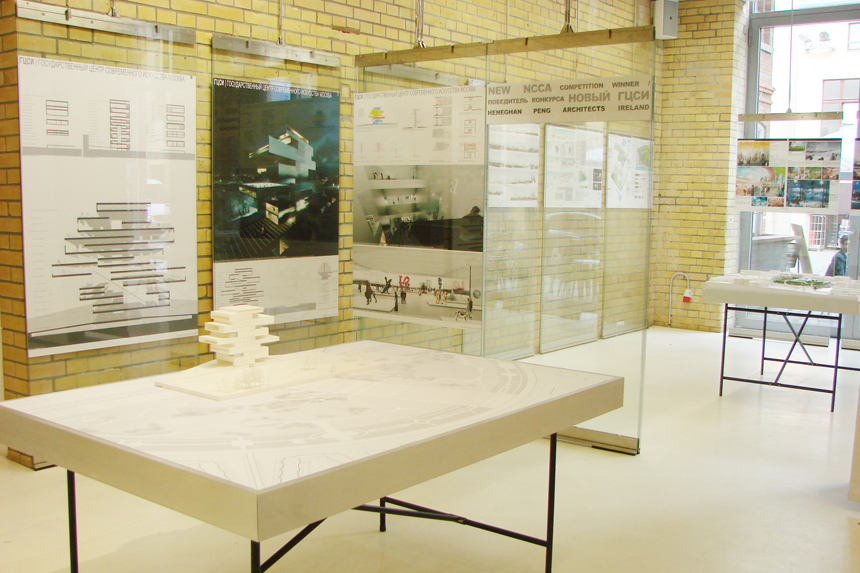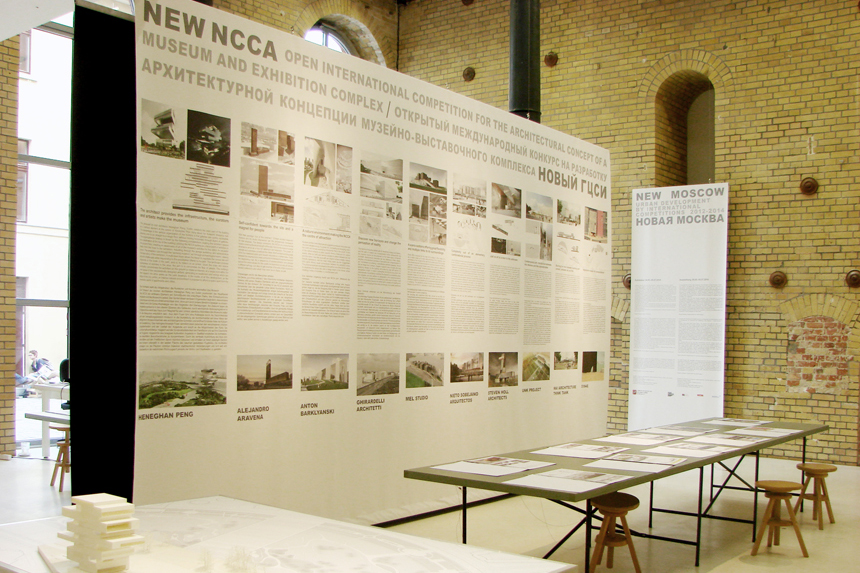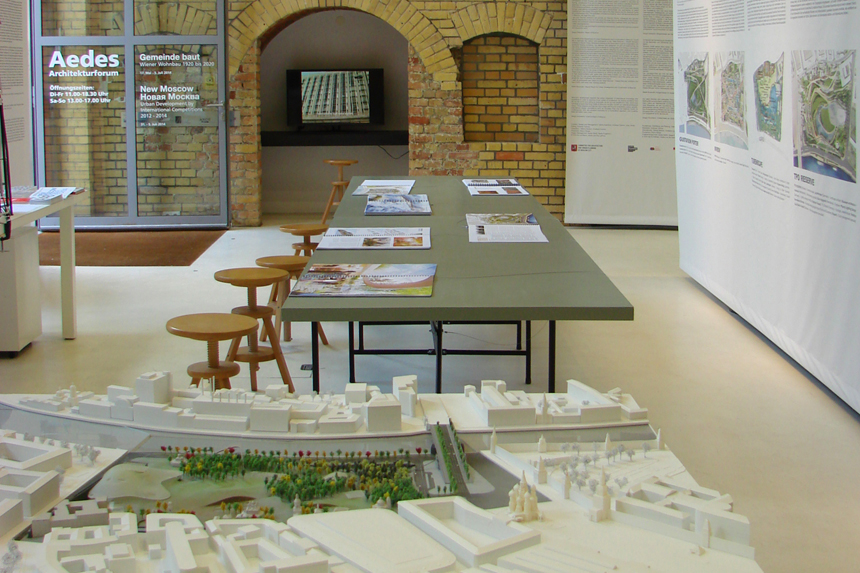A new series of international architecture competitions is characterising a clear change in the current urban planning strategy of Moscow. The initiator of these developments is the incumbent chief architect of the Russian capital, Sergey Kuznetsov. Together with his team, he has breathed new life into Moscow’s urban development since taking office in mid 2012. The exhibition New Moscow – Новая Москва presents two international competitions – from the fields of landscape planning (1st prize Diller Scofidio + Renfro, New York) and cultural building (1st prize Heneghan Peng, Dublin) – and through these demonstrates the great gains for the city’s urban planning that are being drawn from this open, global approach.
During Kuznetsov’s first year in office, the city initiated no less than twenty international competitions for new planning in the areas of architecture, urban development, infrastructure and traffic planning. A further thirty competition announcements will follow. From the competition submissions, the city aims to draw out diversity and support quality and innovation. The international field of selected participants enables a new culture of exchange that supports the growth of knowledge and ideas through workshops and strategic cooperation. A further significant agency of the new building policy is transparent management and, for the first time, the participation of the city inhabitants in public design consultations and debates.
Both of the competitions presented in the exhibition demonstrate the great potential for development and innovation in Moscow to meet the growing demands of the city residents for cultural and leisure facilities. A further important topic is the extension of the traffic infrastructure of this growing city, which is initiating a radical change in the building policy of the Russian capital.
ZARYADYE
The first competition shown in the exhibition is for Zaryadye Park. The site is on the banks of the Moskva River, directly east of the Kremlin and Red Square. It encompasses an area of approximately 53,000 m2 in between the two-lane Ulitsa Varvarka on the city side and the six-lane Moskvoretskaya Naberezhnaya along the riverside, with a slope of up to 20 metres. The history of the competition area is closely tied to the history of the city of Moscow, as Zaryadye existed in the 12th century as a settlement within the city fortifications, Kitai-gorod. Relics from past centuries have been preserved on the site up until today, including the English Court from the 16th century, the Snamenski Church and the former residence of the Romanov boyar family, the last dynasty of Russian tsars, from the 17th century.
The two-stage competition for the design of a public park on this site provides for the establishment of a place of national significance. For over fifty years plans for a new green area lay dormant so that, as regards urban development, great importance is attached to the proposal. Its character as an open-air museum, inner city recreation area and a sight of international standing was already defined in the competition brief. From an international pool of applications from 90 offices, an initial selection of six projects was made that included the design teams: MVRDV with Atrium, Anouk Vogel and Arcadis (NL, RUS, CH, USA); Diller Scofidio + Renfro with Hargreaves Associates und Citymakers LLC (USA, USA, RUS); Gustafson Porter with Sauerbruch Hutton and ARUP (UK, GER RUS); TPO Reserve with Maxwan, Buro Happold and Latz + Partner (RUS, NL, UK, GER); Turenscape with AnOtherArchitect (China, GER); and West 8 with Bernaskoni and Buro Happold (NL, RUS, UK). The proposal led by Diller Scofidio + Renfro was awarded first prize at the end of 2013.
NCCA
The second contribution featured in the exhibition is the competition for a new building for the National Centre for Contemporary Arts (NCCA). The NCCA was founded in 1994 by the Russian Minister of Culture as the first state-run museum for contemporary art in Moscow. The young institution quickly grew to be a permanent fixture in the Russian cultural sector and was followed by regional branches in St Petersburg and six other Russian cities. After a formative phase of around seven years, the museum acquired the building of a former lighting factory in the city centre, the main building of which was adapted through a constructivist remodelling to fit its new use as an exhibition hall, meeting place and science centre. However the spaces quickly became too small. As part of the city’s urban development redirection, the intention is to construct a new building with an area of 28,300 m2 at Khodynka Field, the partially converted and built-up site of the first Moscow passenger airport, north west of the city centre.
The basis for the new design of the NCCA was formed in summer 2012 by an open, international competition with around 900 submissions, including proposals from the offices of Zaha Hadid/Great Britain, Shigeru Ban, Kengo Kuma/Japan and OMA/The Netherlands. Ten offices qualified for the second stage, coming from locations as diverse as Chile, Russia, Italy, Spain, USA, China and Belgium. Heneghan Peng from Dublin were announced as the winners with an unconventional design in the form of a stack of thirteen rectangular layers, the iconographic character of which is sure to exert an effect well beyond the neighbouring districts.
Catalogue
An Aedes catalogue was published.
ISBN 978-3-943615-19-7
Russian/English
Price € 10,-
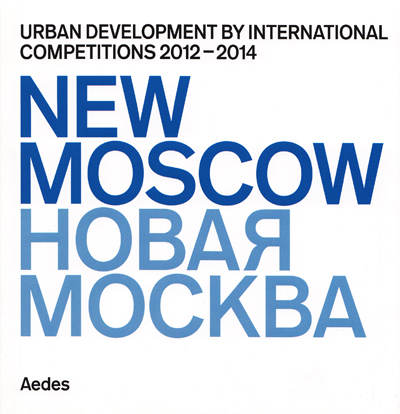
Sponsors
Committee for Architecture and Urban Planning of Moscow City, Barkli, KP UGS, Schusev State Museum of Architecture, Citymakers, Zumtobel, Schindler, PORT Technology, AXOR, carpetconcept
Diese Ausstellung wurde ermöglicht mit der großzügigen Unterstützung von:
